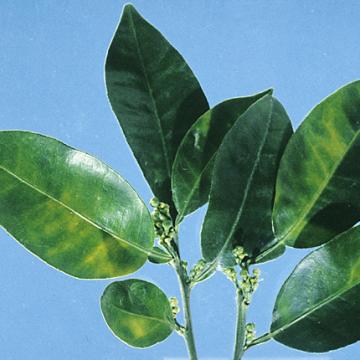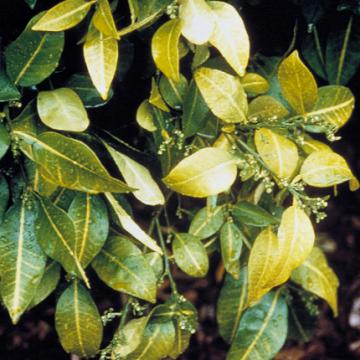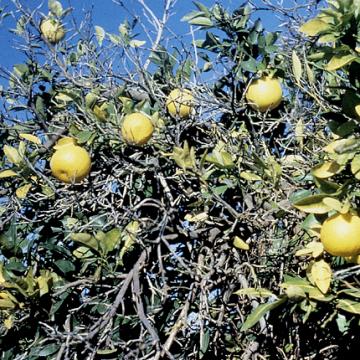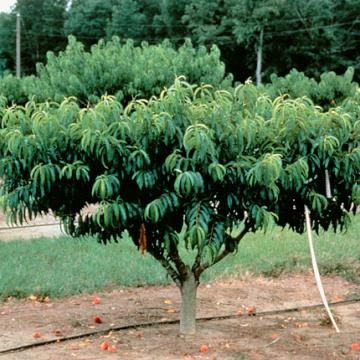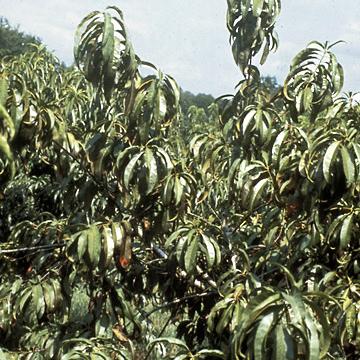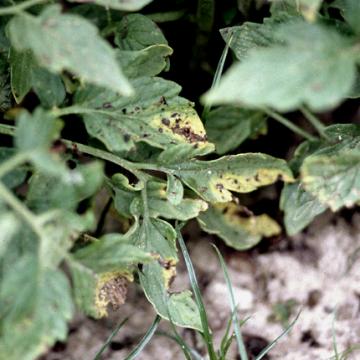DISEASE: Australian citrus dieback
HOST: Citrus (Grapefruit)
Leaves with mottled chlorosis.
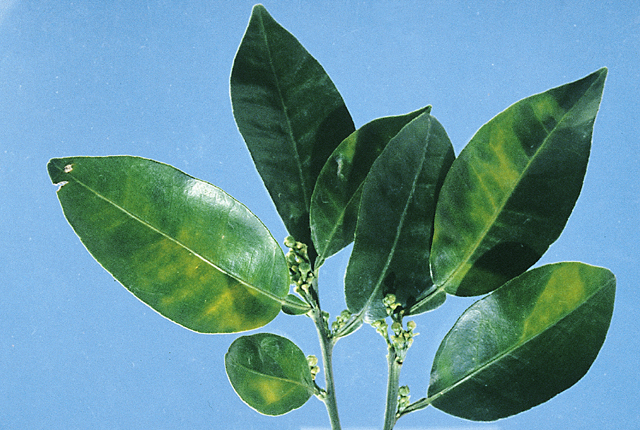
Australian citrus dieback | Citrus (Grapefruit)
DISEASE: Australian citrus dieback
HOST: Citrus (Grapefruit) (Citrus paradisi)
PATHOGEN: 'Candidatus Phytoplasma' sp.
PATHOGEN SYNONYM: Phytoplasma (undefined)
SOURCE: P. Broadbent
DISEASE: Australian citrus dieback
HOST: Citrus (Grapefruit)
Late stage of disease. Note yellowing of leaf veins and entire leaves.
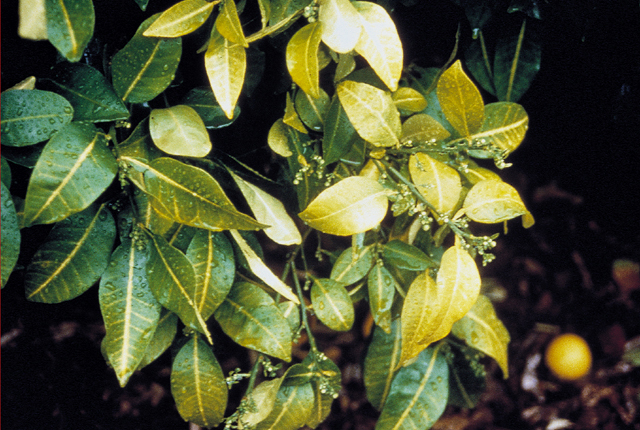
Australian citrus dieback | Citrus (Grapefruit)
DISEASE: Australian citrus dieback
HOST: Citrus (Grapefruit) (Citrus paradisi)
PATHOGEN: 'Candidatus Phytoplasma' sp.
PATHOGEN SYNONYM: Phytoplasma (undefined)
SOURCE: P. Broadbent
DISEASE: Australian citrus dieback
HOST: Citrus (Lime)
Severe decline, a late stage of disease. The disease spreads slowly in mature trees, progressing faster in young trees.
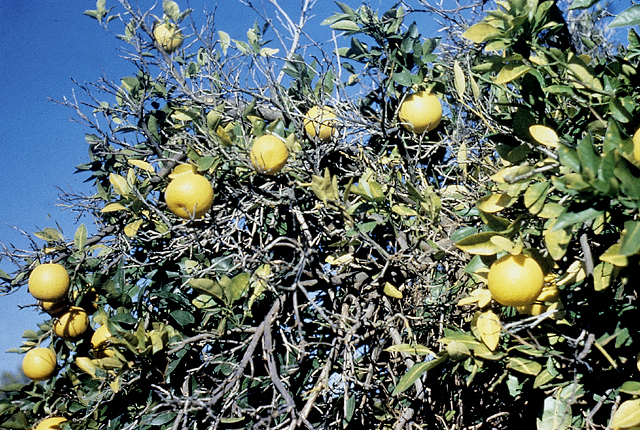
Australian citrus dieback | Citrus (Lime)
DISEASE: Australian citrus dieback
HOST: Citrus (Lime) (Citrus sp.)
PATHOGEN: 'Candidatus Phytoplasma australiense'
PATHOGEN SYNONYM: Phytoplasma Stolbur group
SOURCE: P. Broadbent
DISEASE: Phony disease (Phony peach)
HOST: Peach
Tree with characteristic reduced growth. Foliage is dark green, then turns yellowish. Twigs become brittle and branches die back. Fruit are small.
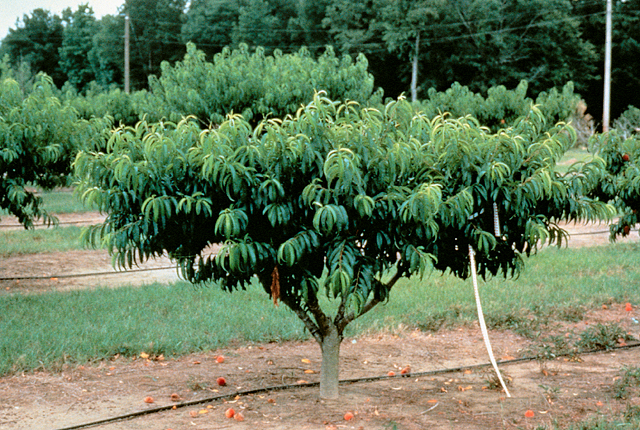
Phony disease (Phony peach) | Peach
DISEASE: Phony disease (Phony peach)
HOST: Peach (Prunus persica)
PATHOGEN: Xylella fastidiosa
SOURCE: P. C. Anderson
DISEASE: Phony disease (Phony peach)
HOST: Peach
Twigs on diseased trees have shortened internodes and increased lateral branching.
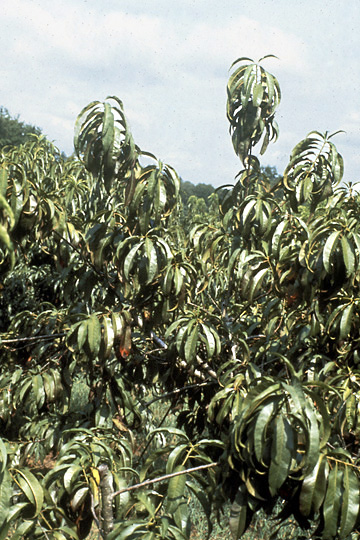
Phony disease (Phony peach) | Peach
DISEASE: Phony disease (Phony peach)
HOST: Peach (Prunus persica)
PATHOGEN: Xylella fastidiosa
SOURCE: M. Davis
DISEASE: Syringae leaf spot
HOST: Tomato
Leaves with brown necrotic lesions and chlorotic margins. Symptoms vary greatly among cultivars. Some have black or brown lesions with bright yellow, chlorotic areas and others do not have yellowing.
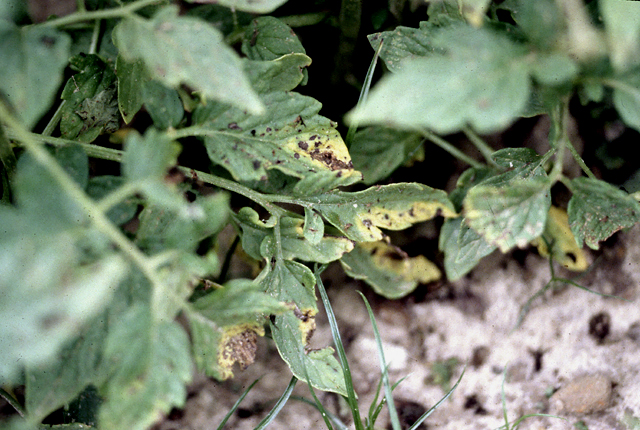
Syringae leaf spot | Tomato
DISEASE: Syringae leaf spot
HOST: Tomato (Lycopersicon esculentum)
PATHOGEN: Pseudomonas syringae pv. syringae
SOURCE: R. Gitaitis


